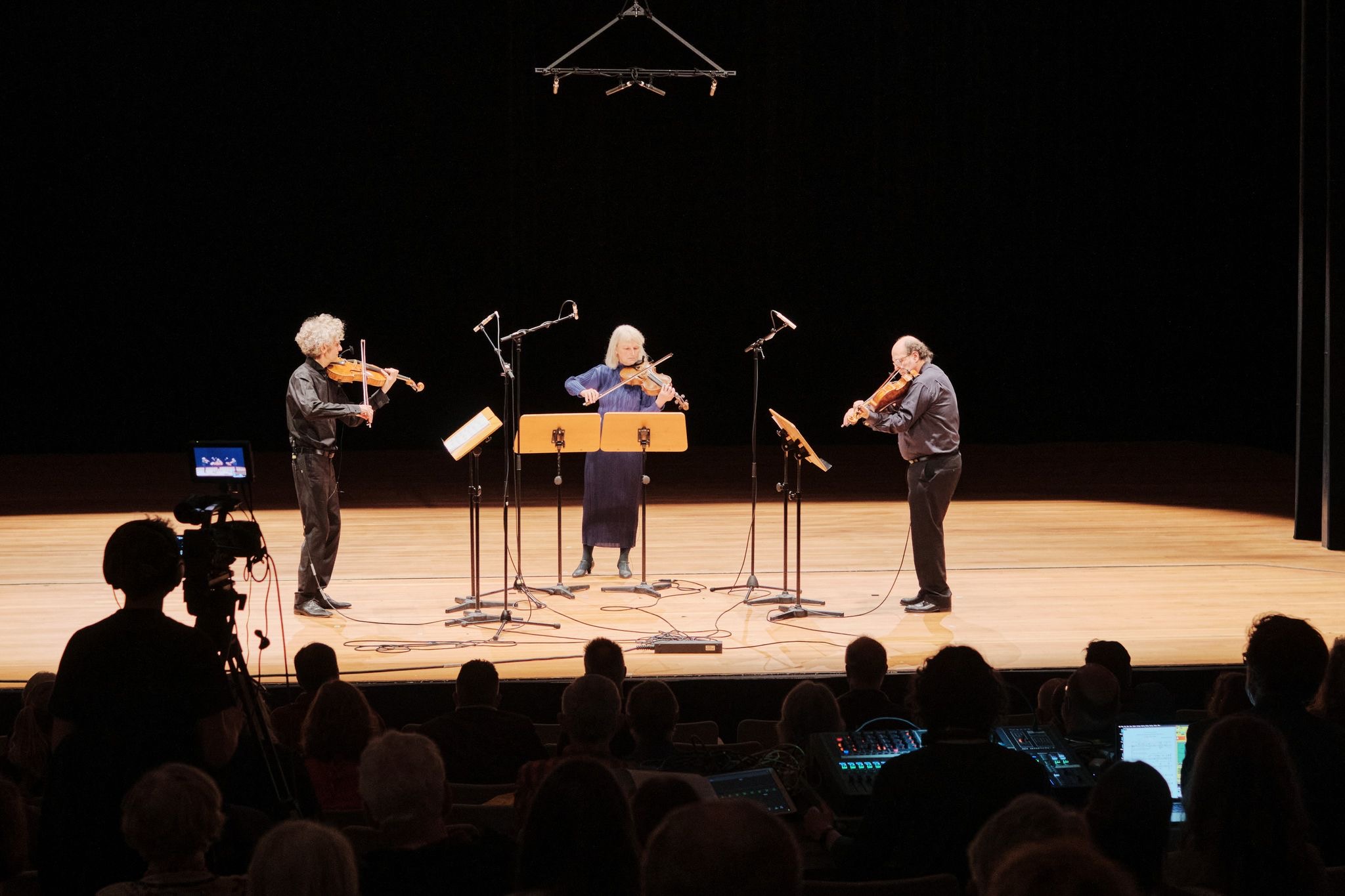The premiere of my seven rotations of seven for three (triple doubles) for three violas and electronics was premiered at the NOW! Festival on October 30th 2021. The piece had a bit of a difficult gestation period. I was planning on using my new live electronics system vivos for this piece but that would have necessitated a recording of all three viola parts in order to tune and test it. Due to the pandemic, every attempt to get into the studio was flummoxed but Barbara Maurer kindly came to my house during the summer to record the second viola part so that I had something to work with in advance of the premiere. This proved sufficient to go back to my more normal procedure when creating works for instruments and electronics: I made sound files from samples of the instrumental part, synchronised these to and test-mixed them with the recording, and restricted the live electronics to some quite simple pitch shifting, spectral freezing & stretching, and delays.
Another problem arose when Gareth Lubbe was no longer able to make the premiere due to scheduling conflicts. Very luckily we were able to secure the services of Vincent Royer to take Gareth’s place. It is his playing, along with Barbara’s and Emile Cantor’s, that you can see and hear in the video below.
As usual for me, the performance software was developed in MaxMSP. Apart from the integration of the live viola processing mentioned above, it consisted mainly in triggering and mixing in sound files, but also presented the score on-screen. This obviated the need to follow and turn pages of a paper score, thus being torn between differently located and distracting focuses of attention during the performance.
The sound files were immersive third-order ambisonic renders that were presented over sixteen loudspeakers in the performance space and mixed live by myself, with Jorge Vallejo assisting and focusing mainly on the viola amplification. The video below was produced and directed live by Max Schmitz and his team, with editing also by Max. The audio recording is based on a stereo recording made by Arthur Jogerst but I mixed in some of the ambisonic sound files during post-production. These were carefully aligned with the waveforms of the live-triggered sounds files in the hall recording and were mainly added to support sounds arriving from the rear, as these were quite diffuse in the stereo recording. This also gave me the opportunity to create a 5.0 surround mix (available upon request).
Many thanks to Barbara, Emile, Vincent, Max, Jorge, and Arthur for their dedication to the realisation and documentation of this work.
See the programme note below for more details of the musical aspects of this piece.
programme note
seven rotations of seven for three (triple doubles) was written for Emile Cantor, Gareth Lubbe, and Barbara Maurer. Though very different, it’s a retrospective view of my tramontana which was premiered by Barbara at Darmstadt in 2004. As with that piece, the violas are tuned so that the first three strings have a harmonic in common with the seventh partial of the fourth string—a pitch which plays a central and recurring role in the piece.
seven rotations is, then, an abstract investigation of the sonic, microtonal, and dramatic potential of the viola double harmonics available using this tuning, as well as a sevenfold rotation of two sets of seven-bar rhythmic sequences. Of these, one set is quite fast and discontinuous and the other is slow in tempo but frenetic and heavy or obsessive. The piece was generated with my slippery chicken algorithmic composition software but extensively edited or, rather, `interpreted’ via standard pencil-and-paper techniques.
Although each of the three viola parts is equally challenging, there is a general sense of the second (middle) viola being flanked by the other two, left and right. Overall, the second viola moves from double harmonics on the first two (higher) strings to those on the lower two, whereas the flanking players have the opposite movement. Another process at play is the gradual introduction of a low microtonal `melody’ on the C string: `normal’ notes are conspicuously absent at first but come more to the fore as the piece progresses.
(I apologise if all of this sounds rather dull and/or technical, but my approach to music and especially composition is often purely formal, abstract, hermetic even, and process-based, as opposed to conceptual. To put it another way, works such as this are focused on creating and framing opportunities for perception rather than reaching for the `extra-musical’.)


Leave a Reply